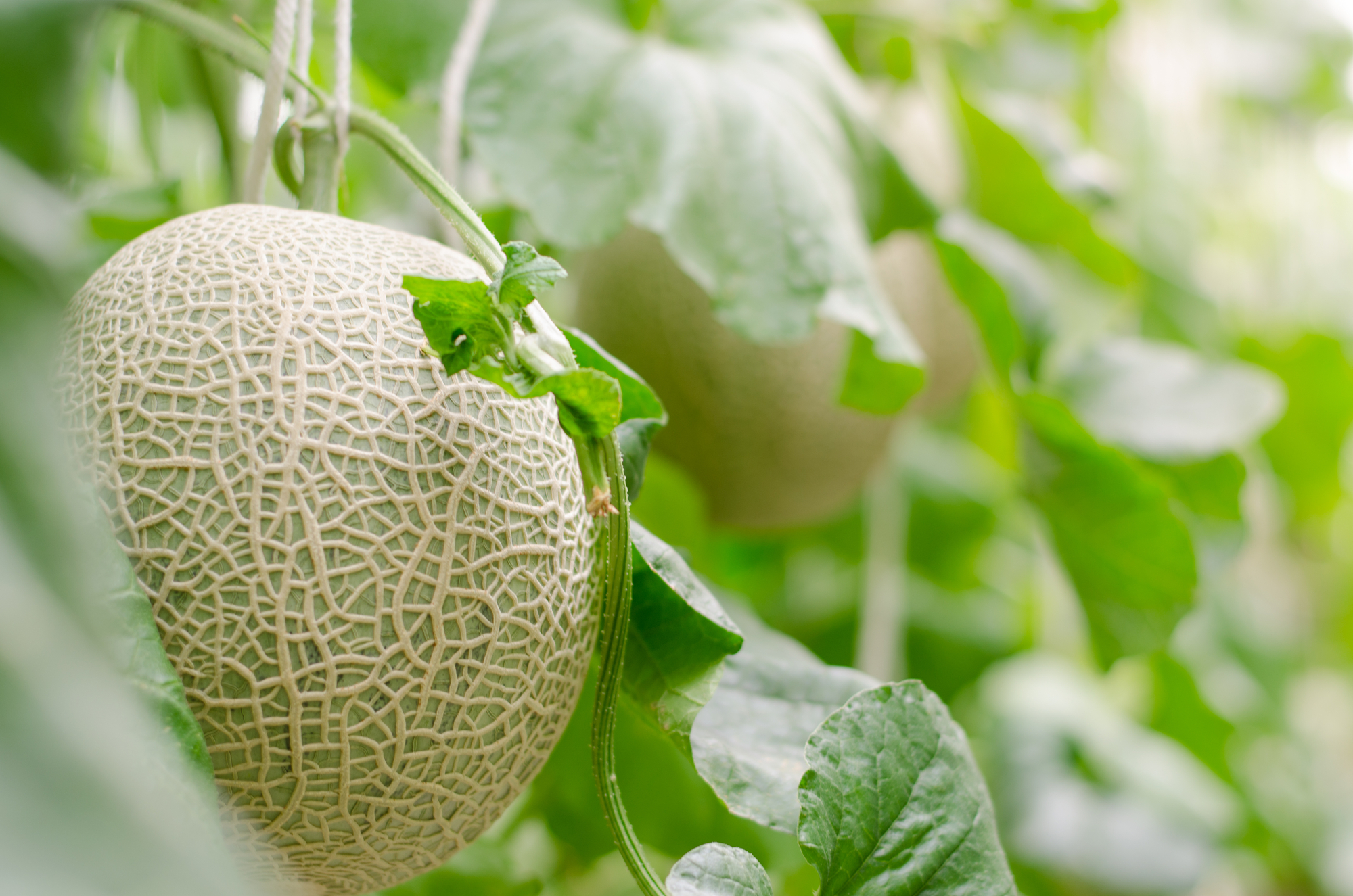Many of us get intimidated about growing melons. Actually it’s not so much the growing part as it is the knowing when to harvest part.
So let’s get to know this crop a little better and that may take away the fear of growing them.
Traditional melons are a long season crop and, unless you are choosing a dwarf or midget variety, should be started indoors on a heat mat to get a jump on growing. Melon plants are also very fragile and should only be started a month before transplanting so that they don’t become leggy and susceptible to breakage and shock. Seedlings should also be started in larger containers, at least 3” to protect the delicate roots when transplanting.
Once plants have at least two sets of true leaves its time to back off on the water and heat and prepare them to be hardened off outside. Slowly reduce the heat of your mat over the next week and allow plants to dry out between watering.
Move them outside when danger of frost has passed and place them in rows according to the directions for your melon type. Plants should be watered in with a soluble organic fertilizer such as fish emulsion which will keep plants from burning. As the plants grow try to keep the area free of weeds. Melons are heavy feeders and will struggle to compete with weeds for water and nutrients.
The cucumber beetle is the number one enemy of melon plants and they are difficult to keep away. Not only do they damage the foliage but they also spread bacterial leaf wilt. The best deterrent is row cover but, there is a downside. Melons need to be pollinated to set fruit so row cover will need to be removed for parts of the day to allow pollinators to do their job. Neem oil can also be a deterrent but as we know can also be harmful to beneficial insects so use it sparingly.
Melons also require regular watering during the vine and fruit growth stage however, once the fruit has grown to full size but has not yet ripened, their water should be cut off. Watering ripening melons will lead to watery, bland fruit. Plants should only be watered if they are showing signs of serious heat stress.
Now we get to the tricky part that everyone fears. How do you know when melons are ripe for the picking? Trust your eyes and your hands! Look for these telltale signs of ripeness;
-
- Change in skin cast or coloration.
- Cracking, striations, or other markings.
- Slight softening of the fruit.
- Browning and shriveling of the tendril and/or leaf closest to fruit stem.
- Shrinking of the area where stem attaches to the fruit. When this occurs, it’s time to test for ripeness.
When fruit is ripe it will slip from its vine with just a gentle tug. Once harvested, melons should be stored in the refrigerator to halt the ripening process and keep them fresh and tasty!
It may take a few seasons of practice but once you master them, you’ll love trying all the different varieties! So give melons a try, we know you can do it! As always, visit us at the garden center if you have questions.

